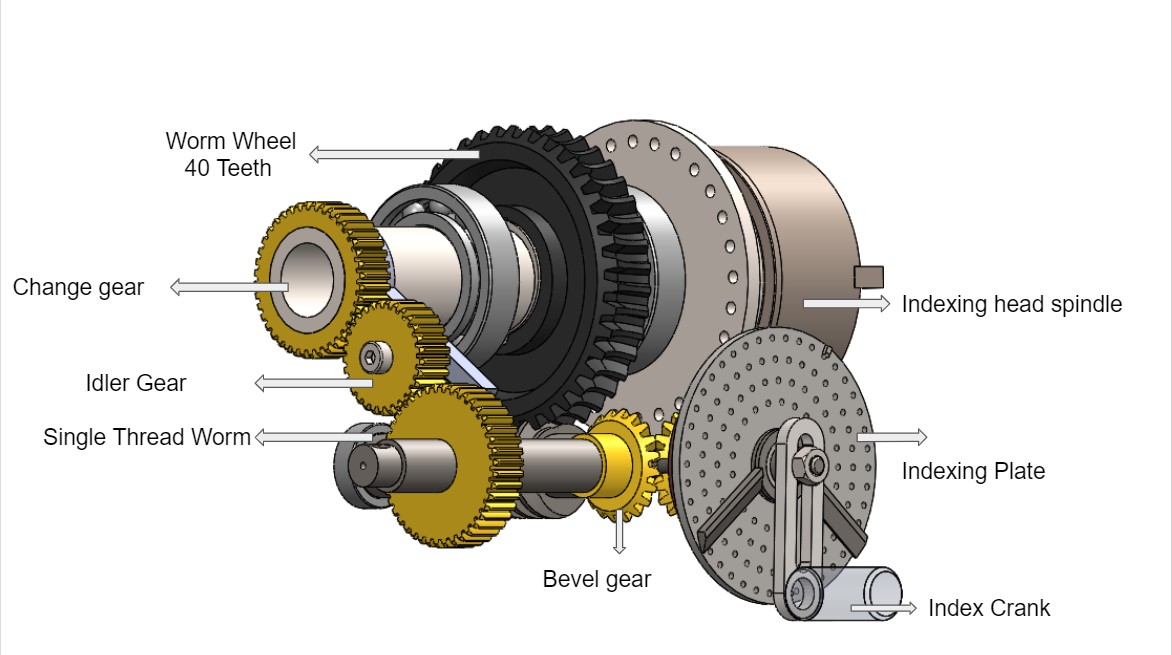Theory
Differential Indexing Mechanism is method used on a milling machine for dividing a circle into subdivisions otherwise unobtainable by utilizing the difference between simultaneous movements of index plate and index crank.
 DIFFERENTIAL INDEXING MECHANISM
DIFFERENTIAL INDEXING MECHANISM
In differential indexing, the index plate is made free to rotate. A gear is connected to the back end of the dividing-head spindle, while another gear mounted on a shaft is connected to the shaft of the index plate through bevel gears. When the index crank is rotated, the motion is communicated to the workpiece spindle. Since the workpiece spindle is connected to the index plate through the intermediate gearing as explained above, the index plate will also start rotating. If the chosen indexing is less than the required one then the index plate will have to be moved in the same direction as the movement of the crank to add the additional motion. If the chosen indexing is more then the plate should move in the opposite direction to subtract the additional motion.
The direction of the movement of the index plate depends upon the gear train employed. If an idle gear is added between the spindle gear and the shaft gear in case of simple gear train then the index plate will move in the same direction to that of the indexing crank movement. In the case of compound gear train, an idler is to be used in the case when the index plate is to move in the opposite direction. The procedure of calculation is explained with the following video attached below.
Application
Indexing mechanism can also be used for producing a square or hexagonal bolts, cutting splines on shafts, fluting drills, taps, reamers,gears etc.